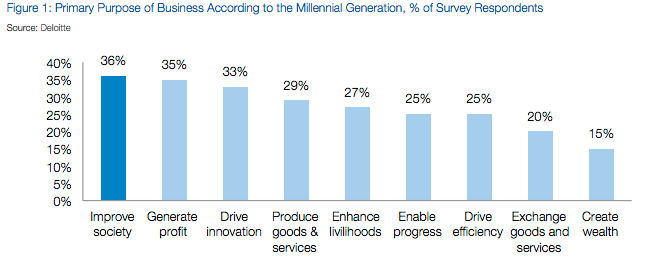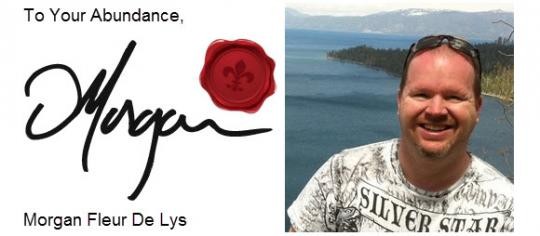Making Money While Making The World A Better Place
Post on: 16 Март, 2015 No Comment

Follow Comments Following Comments Unfollow Comments
Making money while making the world a better place – what could possibly be better than that? That is exactly the goal of impact investors. James Lee Sorenson, successful entrepreneur and philanthropist, calls it the “double bottom line,” and achieving that double bottom line is something he is incredibly passionate about. Impact investing is “doing good while doing well,” states Sorenson in a recent presentation.
It was Jim’s interest in “doing good while doing well” that has driven him to dedicate the majority of his time toward impact investing these days.
“Give a man a fish and he’s fed for a day, Teach a man to fish and he’s fed for a lifetime, Teach a man how to teach others how to fish, and future generations are fed for their lifetime” — James Lee Sorenson
For those who may not be as familiar with the term, impact investments “are investments made into companies, organizations, and funds with the intention to generate a measurable, beneficial social and environmental impact alongside a financial return.” (GIIN)
“Historically many have assumed that the returns of these impact investments are always going to produce below market returns, but that is proving to be untrue,” Sorenson said. “The majority of today’s impact investors are seeking returns in excess of 20 percent, with over 80 percent of investors making investments in private equity, private debt or equity like debt instruments.”
I have always been a huge believer that the way to create scalable, sustainable, global, societal change is through free enterprise. It is rarely the application of government programs that create true, lasting change in the world. It is the entrepreneurs working out of garages in Silicon Valley and shacks with dirt floors in India that end up changing the world for the better. The more we can drive investment capital to these entrepreneurs with the passion for improving the world around them, while generating profits at the same, the faster we will improve this world we live in. That’s what makes impact investing so exciting to be a part of.
Impact investing is emerging as a growing sector and a dynamic multifaceted new economy. It is considered by many to be the most promising social innovation gaining significant momentum. In Sorenson’s presentation he shared several megatrends that are driving impact investing:
- There is massive pent up demand for goods and services from the 4 billion people with annual incomes below $3,000, estimated at $5 trillion. (source: CNN money)
- There has been tremendous investor movement in sustainably responsible investments, which are projected to grow to $3 trillion to $10 trillion annually by 2050. (source: WBCSD )
- The welfare state will be forced to be reconfigured as some government expenditures dramatically increase current sources of revenue. For example, life expectancy increases coupled with increased health care costs are projected to nearly double as a percent of GDP by 2040 in most developed countries.
- Over the next 40 years Generation X and the Millennial Generation will potentially inherit an estimated $41 trillion from the Baby Boomer Generation. Surveys show that a key objective of this generation is for business to play a major role in improving society.

Watching my own two children, now 18 and 20 years old, I have seen this passion of our young people for making the world a better place. There is a social conscious that our youth have today that puts many of us adults to shame. so it is not surprising to see the results of the survey evidencing this:
The potential for impact investing is enormous. A 2009 report by Monitor Institute placed the potential for impact investing to grow from $50 billion to $500 billion by 2020. More recently in 2012, the Calvert Foundation estimated an impact investing market potential of $650 billion dollars.
With such a large market potential, one could question why large institutional investors and pension funds don’t jump into the world of impact investing more readily. For that to happen, the ecosystem will need to be more fully developed and there exists a critical gap in need of risk capital and capable human resources in helping early stage ventures get off the ground. The answer to that problem is what drove Sorenson to launch the James Lee Sorenson Center for Global Impact Investing at the University of Utah ’s David Eccles School of Business .
“Impact investments are typically small deals with high due diligence costs that are often too costly for traditional investors to engage in,” he said.
So being a brilliant man with an eye for finding out-of-the-box solutions, Sorenson decided to create a program that allowed for college students to assist in the process of deal sourcing; performing due diligence; preparing investment memorandums; and providing sector support for development in fields such as healthcare, housing, education, agriculture, sustainable energy, entrepreneurial livelihood and training. The outcome of this program is a more affordable impact investing process for the investors, while providing students with real world experience that will be invaluable to them as they finish their University education and head out into the world to begin their careers. No doubt Jim has fulfilled his mission of doing good while doing well as his Center continues helping to remove those hurdles that have held impact investing back from reaching its full potential.
As more of us are willing to get involved in impact investing, whether that be through investing of money or time and talents, together we have the capacity to improve the quality of life of countless people worldwide, and there is just no downside to that.
Amy Rees Anderson (Follow my daily blogs at www.amyreesanderson.com/blog )














